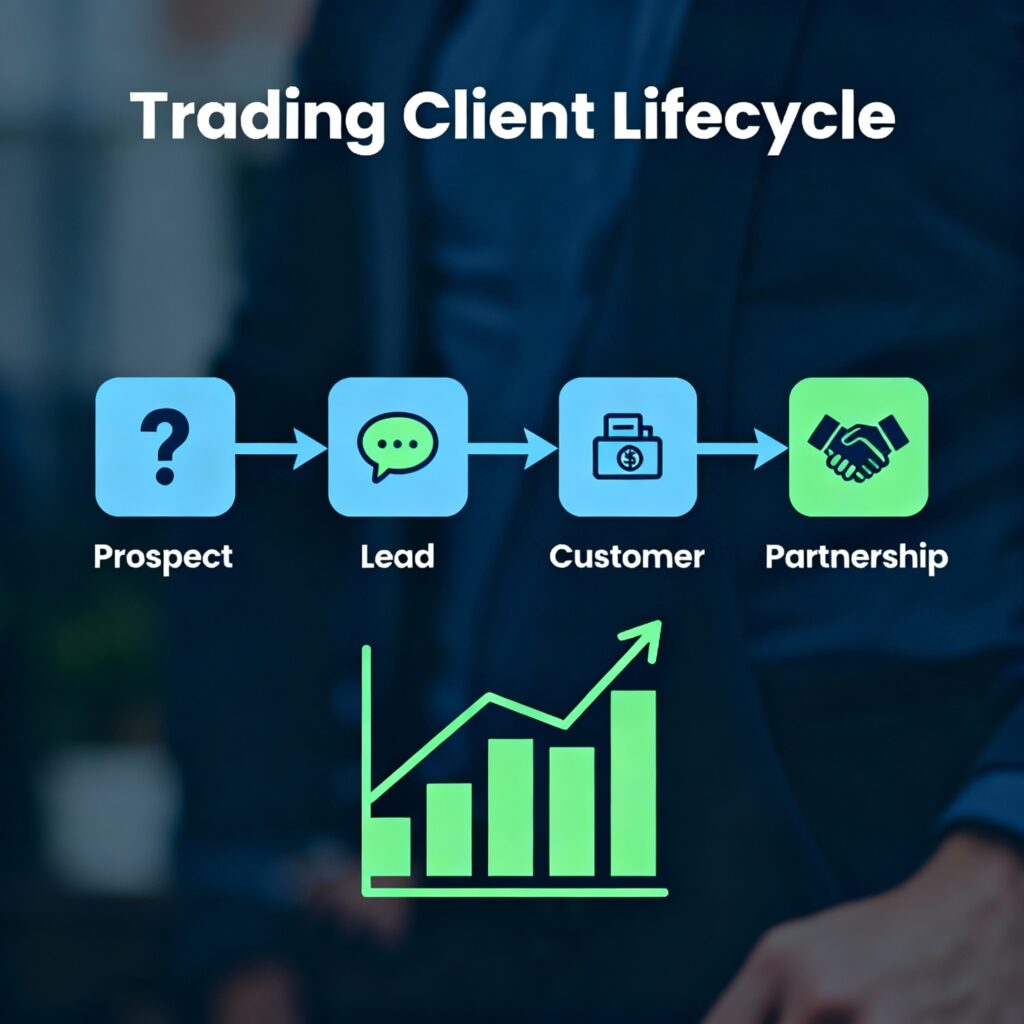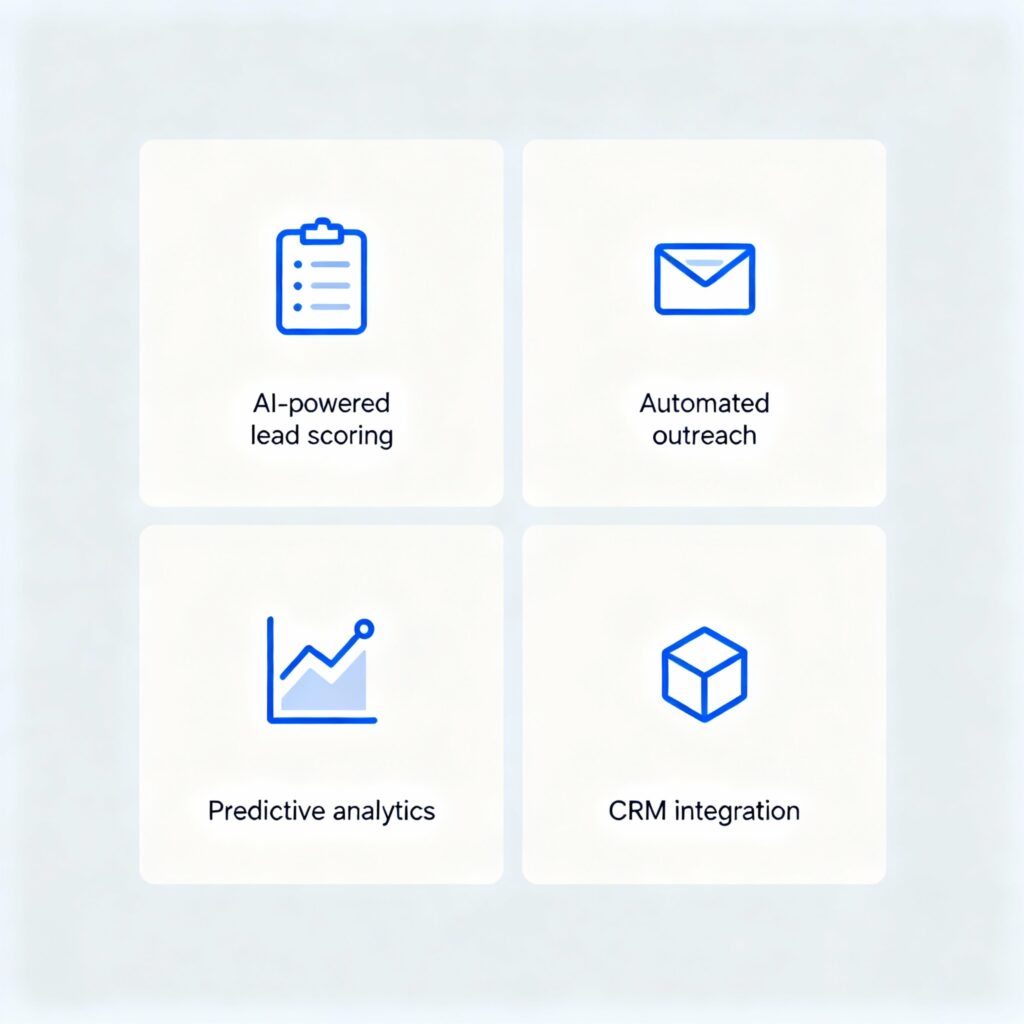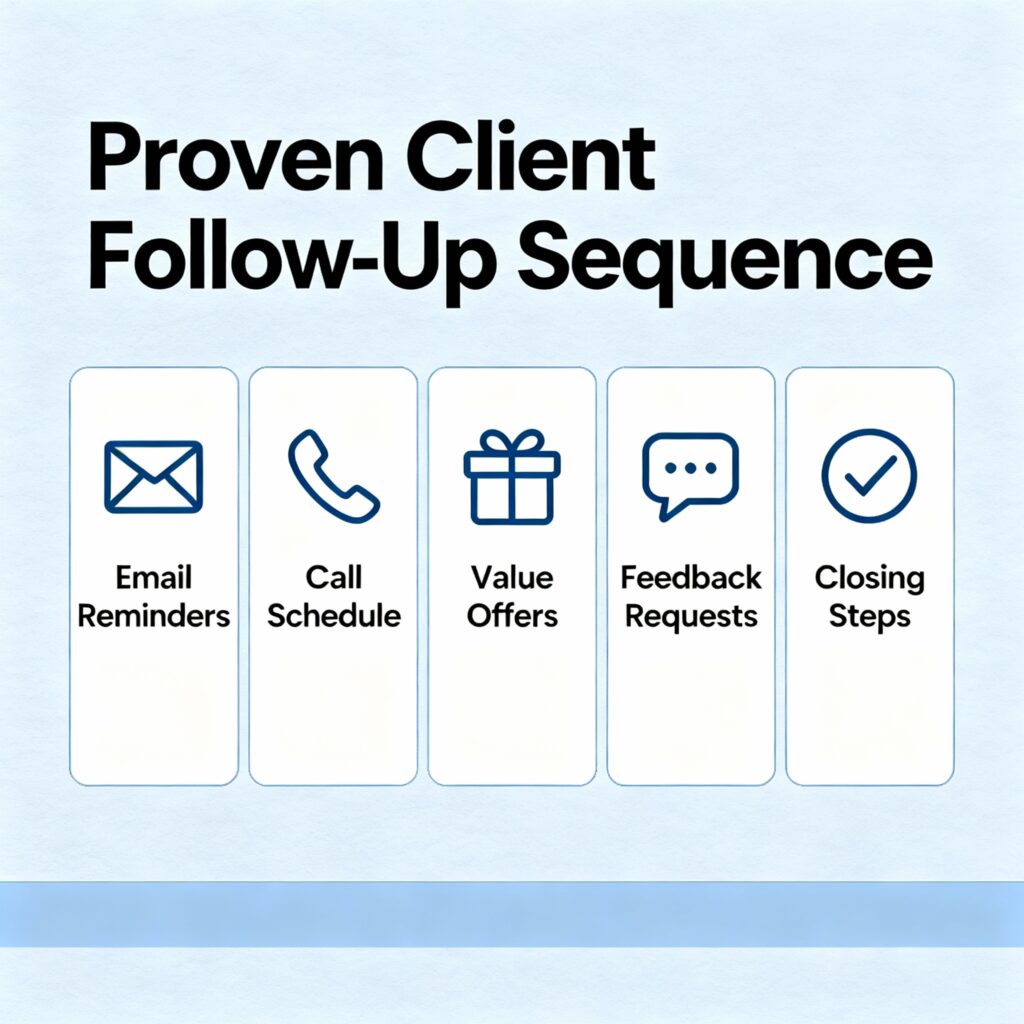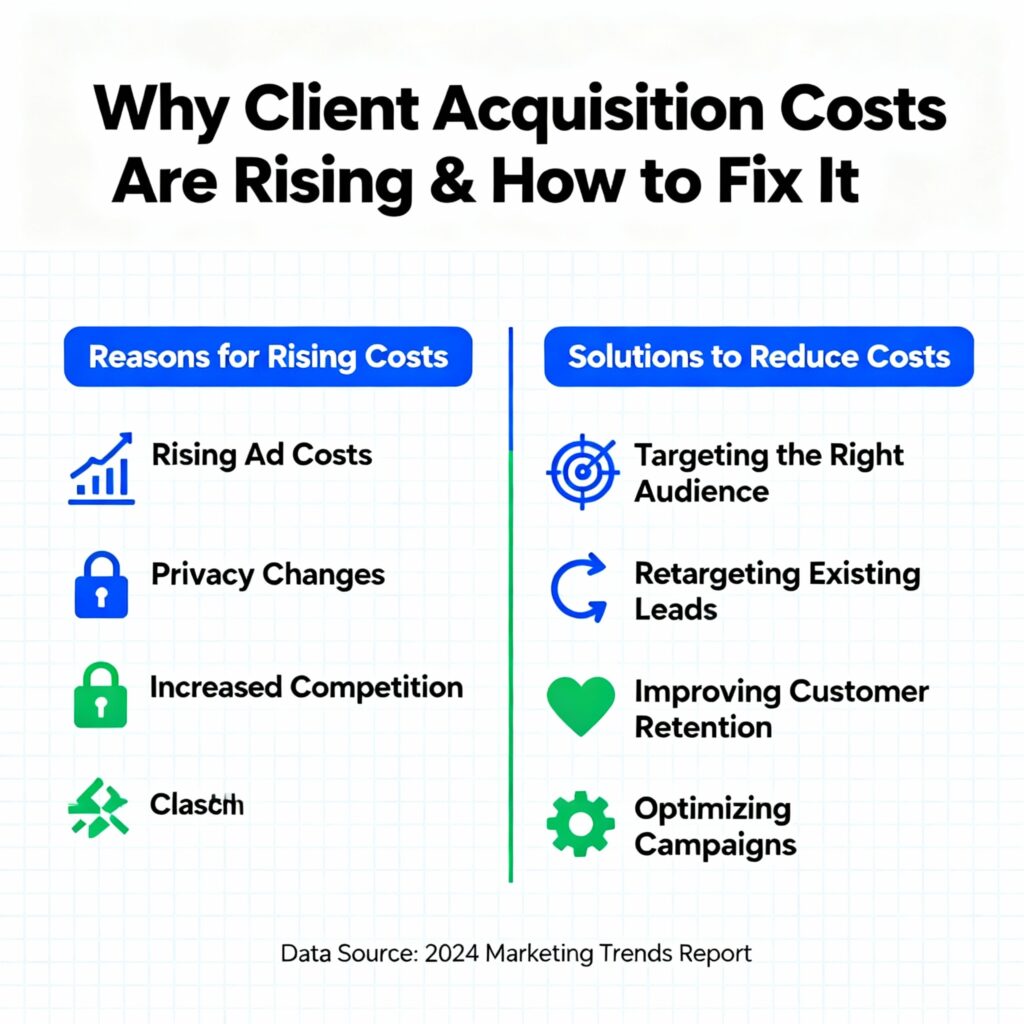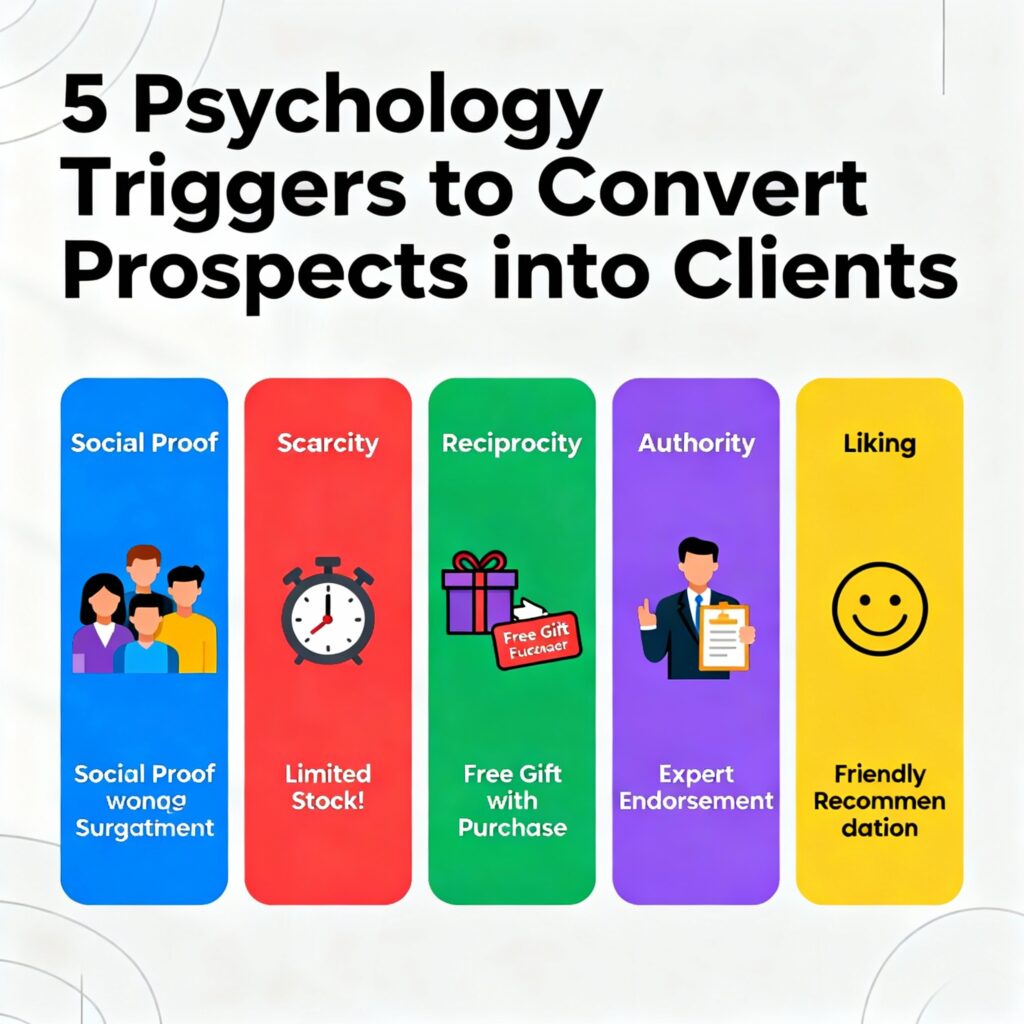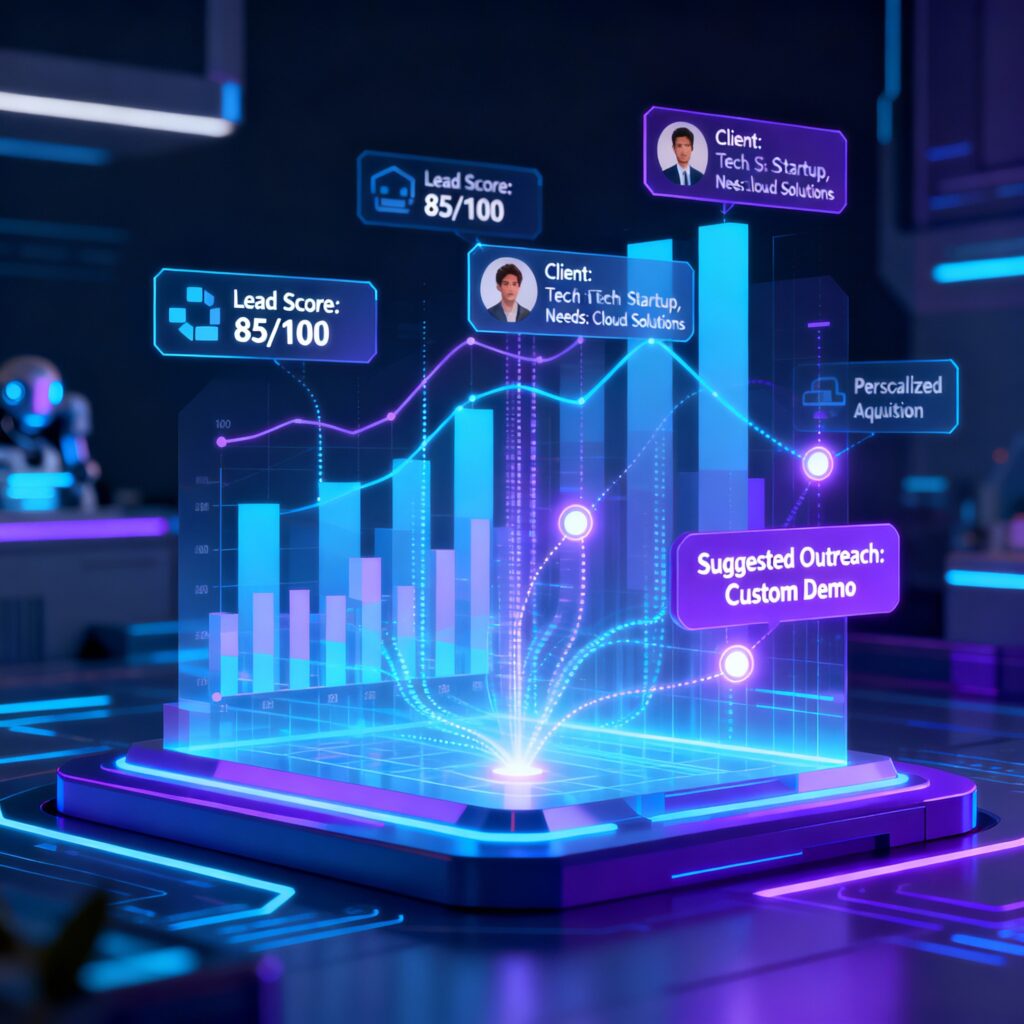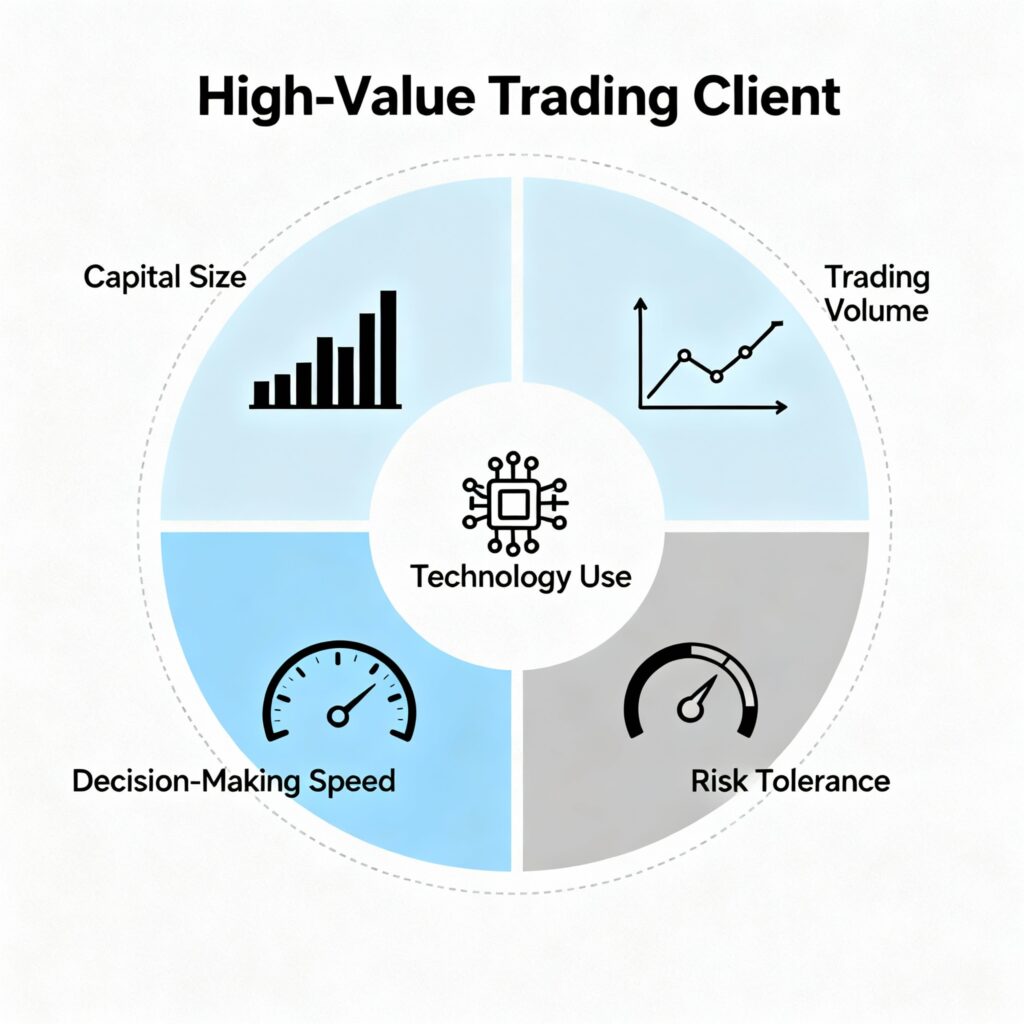
In an increasingly competitive financial landscape, the definition of a high-value trading client has evolved beyond simple transaction volume or account size. Today’s most valuable clients represent something far more strategic: sustainable partnerships that drive mutual growth and stability. Understanding what makes a client truly high-value is essential for building a resilient business in modern markets.
Beyond the Numbers: A Holistic View of Value
While revenue generation remains important, the most forward-thinking firms now evaluate client value through multiple dimensions:
Strategic Alignment
High-value clients share your business philosophy and long-term vision. They understand that successful trading relationships are partnerships, not just service arrangements. These clients:
- Align with your risk management approach
- Share similar time horizons and strategic outlook
- Value transparency and collaborative problem-solving
- Understand market realities and trade accordingly
Relationship Quality
The nature of the relationship itself creates significant value. Ideal clients:
- Communicate clearly and consistently
- Provide constructive feedback that helps you improve
- Treat your team with respect and professionalism
- Understand that strong relationships require mutual investment
The Modern High-Value Client Profile
1. The Sophisticated Partner
These clients bring more than capital to the relationship—they bring intelligence and market insight. They:
- Understand complex strategies and products
- Contribute valuable market perspectives
- Help identify new opportunities and risks
- Maintain realistic expectations about performance
2. The Referral Engine
Some clients create value through their networks and influence. They:
- Actively refer other quality clients
- Provide compelling testimonials and case studies
- Enhance your reputation through association
- Help you access new markets or segments
3. The Innovation Catalyst
These clients push your business to improve and evolve. They:
- Challenge you to develop new capabilities
- Provide insights that drive service enhancements
- Help you stay ahead of market trends
- Encourage continuous improvement
4. The Stable Anchor
In volatile markets, consistency has immense value. These clients:
- Maintain steady trading activity through market cycles
- Provide predictable revenue streams
- Demonstrate long-term commitment
- Help balance portfolio risk through diverse strategies
Behavioral Characteristics That Define Value
Professionalism and Preparation
High-value clients come prepared and maintain professional standards. They:
- Do their homework before engaging
- Understand their own objectives and constraints
- Respect your time and expertise
- Maintain organized records and communications
Risk Awareness
The most valuable clients understand and manage risk appropriately. They:
- Recognize that all trading involves risk
- Maintain appropriate position sizing
- Avoid emotional decision-making
- Understand leverage and its implications
Communication Excellence
Effective communication prevents problems and enhances outcomes. Ideal clients:
- Provide clear instructions and expectations
- Respond promptly to important communications
- Escalate concerns through proper channels
- Share relevant information proactively
The Economic Realities of Client Value
Sustainable Profitability
High-value clients generate appropriate returns without excessive costs. They:
- Understand the value of services provided
- Don’t constantly negotiate on price
- Don’t require disproportionate support resources
- Generate revenue through appropriate trading frequency
Portfolio Fit
The best clients complement your overall business mix. They:
- Fit within your risk management framework
- Align with your strategic direction
- Don’t create concentration risks
- Enhance business diversification
The Hidden Costs of Low-Value Clients
Understanding what makes clients high-value also means recognizing the characteristics that destroy value:
The High-Maintenance Client
- Requires excessive hand-holding and support
- Generates disproportionate administrative burden
- Creates stress and burnout among team members
- Often delivers marginal profitability at best
The Unrealistic Expectation Client
- Demands impossible performance guarantees
- Doesn’t understand market realities
- Blames others for poor outcomes
- Creates legal and reputational risks
The Transaction-Only Client
- Views the relationship as purely transactional
- Shops constantly for better pricing
- Shows no loyalty or long-term perspective
- Provides no strategic value beyond immediate trades
Cultivating High-Value Relationships
Selective Acquisition
The journey to high-value relationships begins with intentional client selection. Focus on clients who:
- Demonstrate the right mindset and approach
- Fit your ideal client profile
- Show potential for long-term partnership
- Value what you uniquely provide
Strategic Development
Help good clients become great partners through:
- Ongoing education and communication
- Regular strategic reviews
- Collaborative goal setting
- Transparent performance discussions
Value Demonstration
Continuously show clients why you’re valuable by:
- Providing insights beyond execution
- Anticipating their needs
- Delivering consistent service excellence
- Being a trusted advisor, not just a service provider
The Long-Term Perspective
The highest-value clients are those you can grow with over years, not just trade with for months. They become integral to your business ecosystem, providing:
Stability in Volatile Times
Long-term clients provide revenue consistency during market turbulence and help you weather economic cycles.
Growth Through Advocacy
Satisfied long-term clients become your most effective marketing channel, referring other quality clients and enhancing your reputation.
Strategic Insight
Clients who have grown with you understand your business evolution and can provide valuable perspective on your direction and decisions.
Conclusion: Quality Over Quantity
In today’s trading environment, the pursuit of high-value clients requires a fundamental shift from quantity to quality. The most successful firms aren’t those with the most clients, but those with the right clients.
High-value clients today are defined by their strategic fit, relationship quality, and long-term potential—not just their trading volume. By focusing on cultivating these meaningful partnerships, firms can build more sustainable, profitable businesses that thrive in any market condition.
